

— Products —
 Consumer hotline +8618073152920
Consumer hotline +8618073152920 WhatsApp:+8615367865107
Address:Room 102, District D, Houhu Industrial Park, Yuelu District, Changsha City, Hunan Province, China
All products
Weather monitoring stations are facilities used to collect, analyze and disseminate meteorological data. They typically include a variety of sensors for measuring parameters such as temperature, humidity, wind speed, wind direction, rainfall, barometric pressure and visibility. These data are transmitted via communication equipment to a weather center or data center for processing and storage.There are various types of weather monitoring stations, including automatic weather ···
Tel/WhatsApp:+8615367865107
Email:Arvin@niubol.com +Nearly 100 partner company in more than 68 countries. We are committed to providing high-quality, practical products to meet your needs and help you solve problems.Product Details
Weather monitoring stations are facilities used to collect, analyze and disseminate meteorological data. They typically include a variety of sensors for measuring parameters such as temperature, humidity, wind speed, wind direction, rainfall, barometric pressure and visibility. These data are transmitted via communication equipment to a weather center or data center for processing and storage.
There are various types of weather monitoring stations, including automatic weather stations, manual weather stations and satellite weather stations. Automatic weather stations can measure and transmit data automatically, while manual weather stations require manual observation and recording of data. Satellite weather stations, on the other hand, acquire weather data through satellite remote sensing technology.
Weather monitoring stations have a wide range of applications, including weather forecasting, climate change research, air quality monitoring, disaster early warning and environmental monitoring. They are of great significance in ensuring the safety of human production and life and improving the accuracy and reliability of meteorological services.

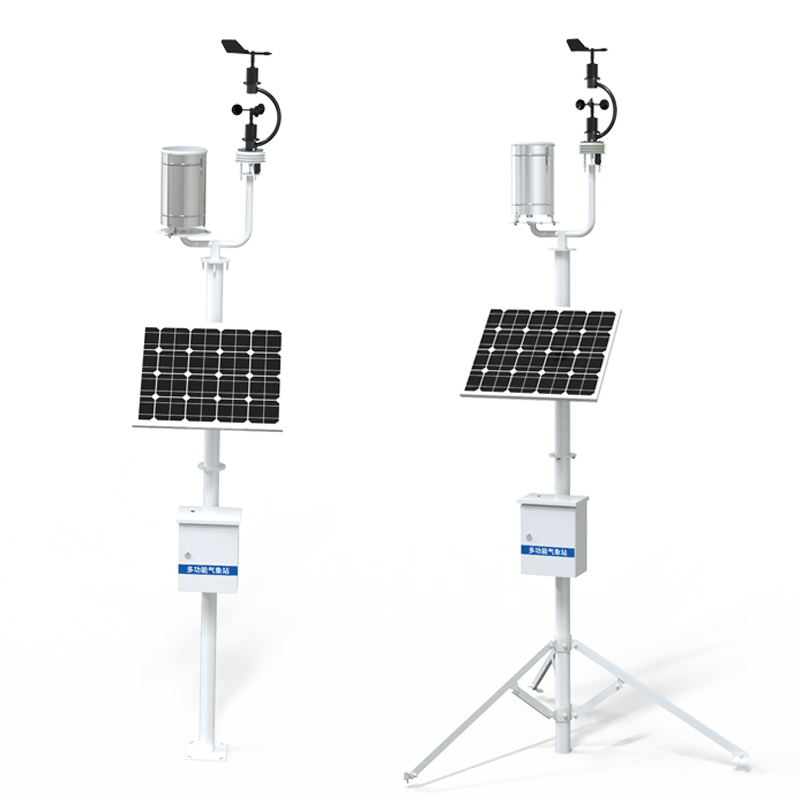
Installation of meteorological observation instruments: In the meteorological station, various meteorological observation instruments will be installed, such as thermometers, hygrometers, wind speed and direction gauges, barometers, precipitation sensors and so on. These instruments will be installed at different locations and heights according to the different meteorological elements to ensure accurate observation. For example, thermometers will generally be installed at a height of 1.5 meters above ground level, while wind speed and direction meters will be installed on higher towers.
Sensing Changes in Meteorological Elements: These instruments will sense changes in meteorological elements through sensors.
Data Acquisition and Processing: The sensors will convert the physical quantities observed by the instruments into electrical signals, the amplifiers will amplify the electrical signals, the analog-to-digital converters will convert the analog signals into digital signals, and the digital signals will be captured and stored by the data collectors. In this way, the weather station can collect the observed values of various weather elements in real time.
Data transmission and storage: after data acquisition and processing, the observed data of the weather station need to be transmitted and stored. Data transmission generally uses communication satellites, communication cables or wireless communication.
Display and Use: After receiving data from the background, the background will display them in the form of figures and graphics, and users can directly view the historical data in the system, which can be called up at any time.
In addition, some advanced Weather monitoring stations can also carry out automatic warning, for sudden meteorological or other unexpected situations can also be sent to the warning, to achieve the organic combination of ground observation and meteorological data.
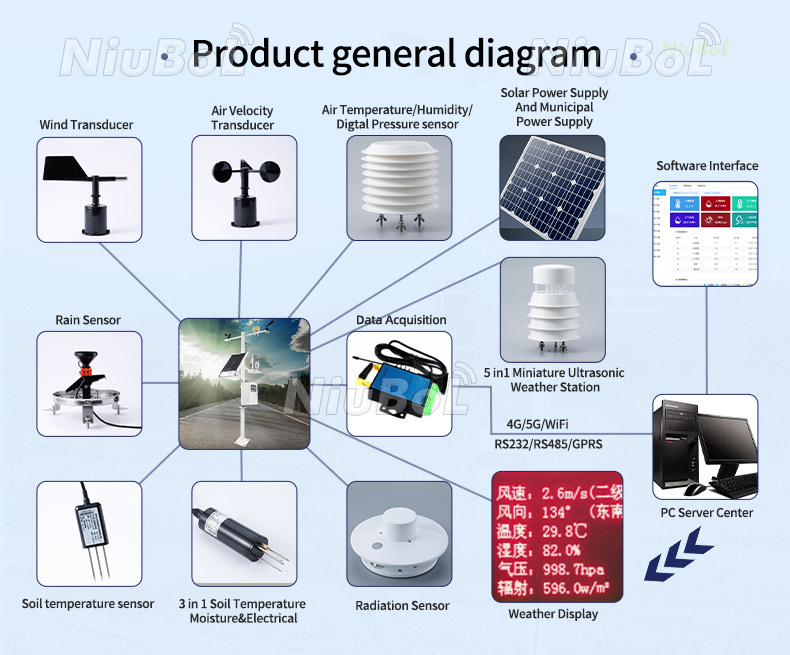
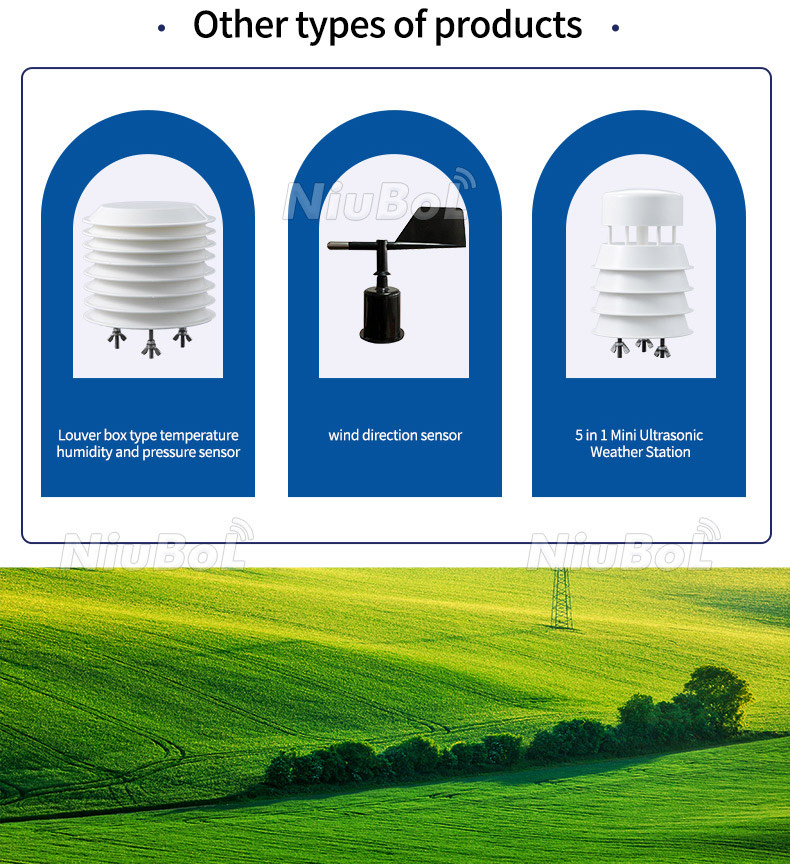
The installation location of the meteorological monitoring station should meet some specific conditions to ensure that the meteorological data can be monitored accurately and comprehensively.
First of all, in order to avoid interference with meteorological data caused by the surrounding taller buildings, the meteorological monitoring station should be installed in a relatively flat and open place. This ensures that the station is able to collect data in a comprehensive manner and avoids errors due to the influence of buildings.
Secondly, weather monitoring stations should avoid being set up in areas with strong magnetic fields, which may interfere with the operation of the sensors. Therefore, when choosing the installation location, it should be as far away as possible from high-voltage lines, areas with strong magnetic fields, etc.
In addition, the installation location of the meteorological monitoring station should also take into account the actual application requirements, for example, meteorological monitoring in specific areas such as agricultural areas or mountainous regions. The installation of meteorological monitoring stations in these places can help people better understand the local climate and weather conditions, so as to better carry out agricultural production or mountain disaster warning and other work.
In addition, for the fixed automatic weather station, its installation can be divided into fixed expansion screws and fixed tripods. In the field environment for meteorological monitoring, in order to avoid damage to the equipment caused by high winds, animal collision, etc., usually choose to make a cement foundation and equipped with expansion screws for fixed installation. In the campus as a teaching meteorological observation or agricultural microclimate environmental observation and other occasions, you can choose a fixed tripod type automatic weather station.
To summarize, the installation location of the meteorological monitoring station should be selected in a place with flat terrain, open surroundings and no magnetic field interference, and the actual application requirements should be considered for specific site selection.
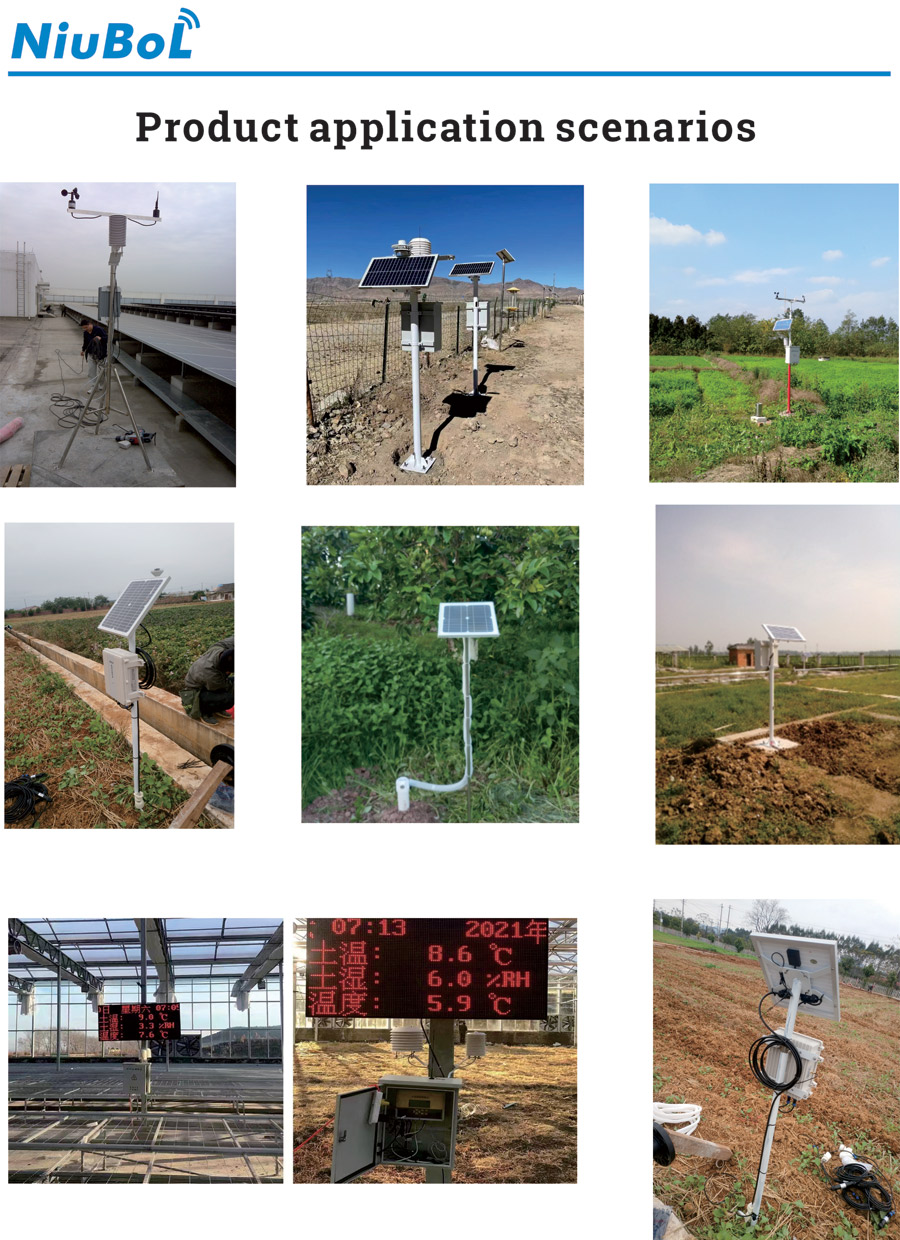
Weather forecasting and climate research: meteorological monitoring stations provide basic data support for weather forecasting and climate research by collecting, recording and analyzing a large amount of meteorological data. By monitoring parameters such as atmospheric pressure, temperature, humidity, wind speed, wind direction and precipitation, weather and climate change can be accurately predicted and researched, thus providing timely weather forecasts and scientific basis for climate change.
Disaster prevention and risk assessment: Meteorological monitoring stations can be used for monitoring and early warning of various types of natural disasters, such as hurricanes, rainstorms, floods, droughts, sandstorms and so on. By monitoring key meteorological parameters and providing early warning information in a timely manner, they can help governments, emergency response agencies and the public to prepare for and be prepared for disasters and reduce disaster risks.
Aviation and maritime safety: Meteorological monitoring stations are critical to aviation and maritime safety. By monitoring key meteorological parameters such as wind speed, wind direction, visibility and weather changes, they can provide pilots and crew with the necessary meteorological information to help determine the best routes and flight strategies to ensure the safety of aviation and maritime activities.
Agricultural production and water resource management: Meteorological monitoring stations play an important role in agricultural production and water resource management. By monitoring meteorological parameters such as temperature, precipitation, humidity and sunlight exposure, they can help farmers and decision makers to make timely crop planting, irrigation and agricultural management decisions, and improve the efficiency of agricultural production and water resource utilization.
Environmental protection and ecological research: Weather monitoring stations have an important impact on environmental protection and ecological research. By monitoring parameters such as atmospheric pollutant concentrations, meteorological conditions and air quality indices, they can help assess the health of the environment and provide scientific data support for environmental monitoring and management.
To summarize, Weather monitoring stations play an important role in weather forecasting, disaster prevention, aviation and navigation safety, agricultural production, water resource management, environmental protection and ecological research, and provide indispensable meteorological information support for social and economic development.
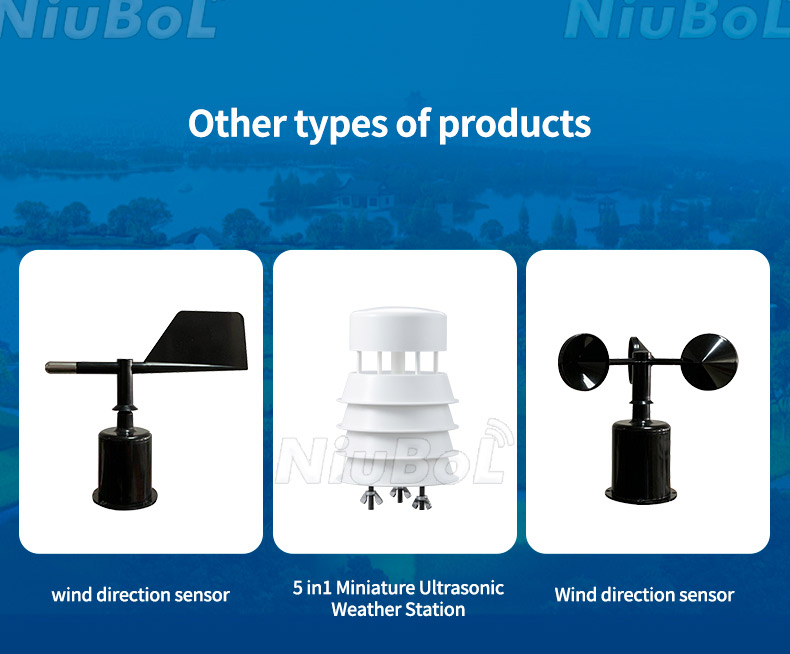
Prev:Soil testing sensors
Next:Farming sensors
Sensors & Weather Stations Catalog
Agriculture Sensors and Weather Stations Catalog-NiuBoL.pdf
Weather Stations Catalog-NiuBoL.pdf
Related recommendations
 Multi-Depth Soil Sensor RS485
Multi-Depth Soil Sensor RS485 TDR Soil Moisture Sensor
TDR Soil Moisture Sensor Pyranometer Solar Radiation Sensors
Pyranometer Solar Radiation Sensors Soil ph sensor
Soil ph sensor Tipping Bucket Rain Gauge
Tipping Bucket Rain Gauge Air Temperature and Humidity Sensor
Air Temperature and Humidity Sensor
Screenshot, WhatsApp to identify the QR code
WhatsApp number:+8615367865107
(Click on WhatsApp to copy and add friends)